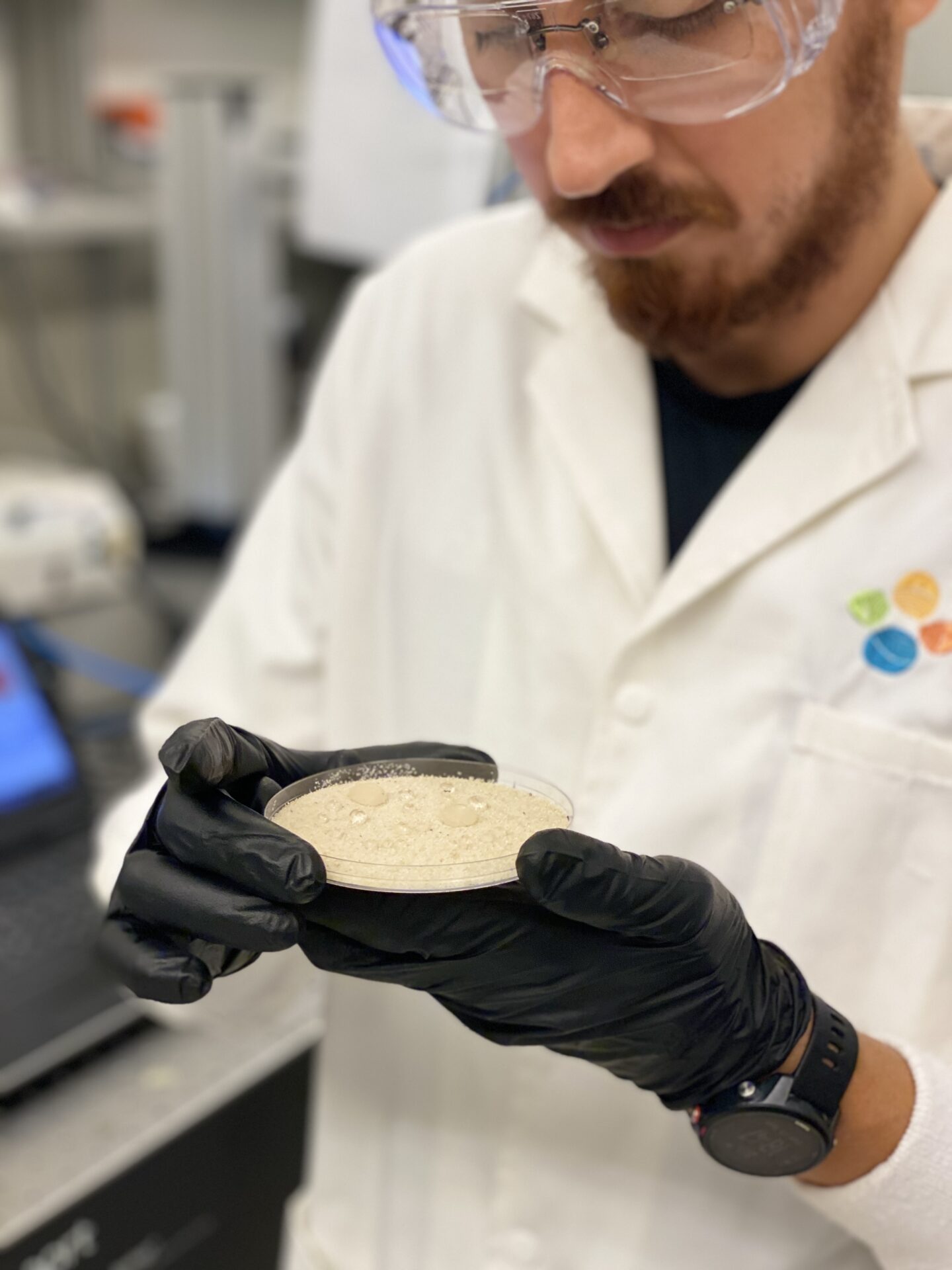When the 2020 COVID-19 lockdown closed laboratories across the world, KAUST Ph.D. student Adair Gallo Jr. followed the advice of his supervisor, Himanshu Mishra, and took some marbles home to play with. Not just any marbles, but liquid marbles — tiny, specially designed structures made from water droplets coated in water-repellent silica particles.
Liquid marbles were first discovered by scientists investigating the behavior of insects called aphids, which live inside plant galls. These aphids create liquid marbles by covering their excreta in a waxy substance so that they don’t drown in it.
“Liquid marbles are unique structures with various engineering applications,” says Gallo. “But no one had studied how the different coatings, particle sizes and friction characteristics influence how they evaporate. I was inspired by patterns in data collected by my colleague Fernanda Tavares to take the equipment home to study.”
The different particles for the coatings were prepared in the lab by KAUST’s Ratul Das. “I couldn’t have done this at home because it is surprisingly complicated,” notes Gallo. “I did create the marbles at my apartment though.”
Gallo arranged a simple set up with a time-lapse camera on his desk at home to monitor the ways the different marbles evaporated. He had to be careful not to overheat the marbles with excessive light. When one set of marbles coated in sticky nanoparticles began to yield fascinating results, he became very excited.
“The marble coating got thicker as the liquid inside evaporated, possibly because the particles were being pushed outward from the water surface to form a multilayered coating. This left behind hollow shells after the water had gone,” says Gallo. “I was so excited I couldn’t wait to run the time-lapse observations, so I slept with the lights on for several nights to gather the data!”
Gallo combined his lockdown data with those previously collected and developed a comprehensive framework to predict the fate of any evaporating liquid marble.

